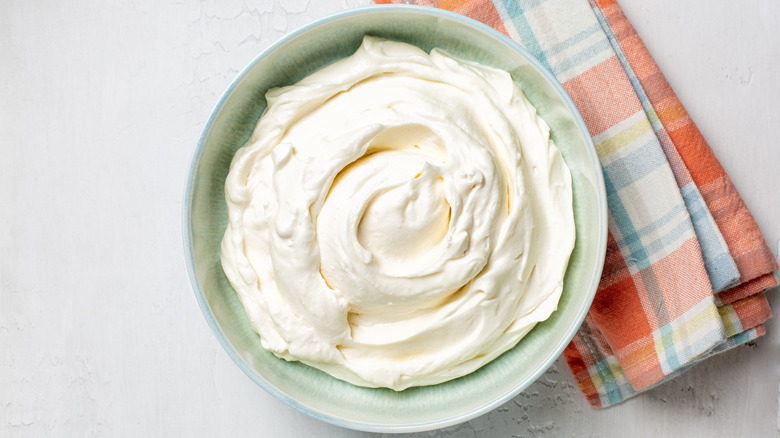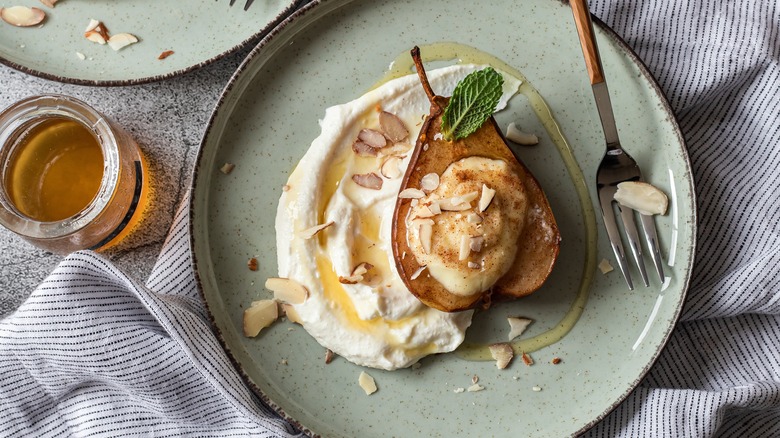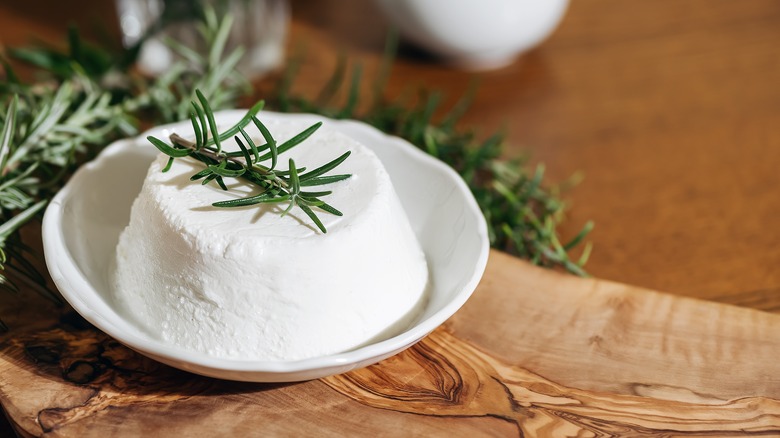What's The Best Method For Making Silky Smooth Whipped Ricotta?
With its soft disposition, mildly funky aroma, and exceptional versatility in sweet and savory applications, ricotta is a genuinely magical cheese. It shines whether craftily stuffed into pasta shells, piped through crunchy cannoli, or whisked into pancake batter. It's no wonder ricotta is even considered a worthy cream cheese substitute for baking. Yet, it's also divine when gloriously whipped into a silky smooth spread.
To achieve the silkiest texture with whipped ricotta, there are two culinary tactics to consider. The first is to discover what other ingredients can be added to blend the ricotta into the creamiest version of itself. While ricotta is already creamy, it has an almost grainy and slightly crumbly texture — this must be smoothed out. Incorporating full-fat dairy, like heavy cream, will add richness to the cheese and create a lusciously sleek texture.
The second is to mix these elements with precision and speed. It's best to use a hand mixer with two beaters, a stand-up mixer with a whisk attachment, or a food processor to bind the ingredients into stiff peaks. You want the spread to be light, fluffy, and smooth. While this technique will give you delicious whipped cheese, there are a few ways to elevate your otherwise ordinary ricotta.
Adjusting texture and balancing the richness
Depending on where you're using your whipped ricotta, you can play with the flavors and texture. If you want to amp up the richness and thickness of your whipped ricotta spread, you may consider using cream cheese instead of heavy cream. If rich dairy isn't what you're going for, there are other, lighter options. A less robust addition would be olive oil, which would add more earthy, nutty notes to the cheese while yielding a lighter-bodied whipped ricotta spread.
Honey and lemon juice are commonly whipped into ricotta, as these help to balance some of the richness. Honey provides a sweet profile, while the acidity from the lemon juice brightens up and lightens the overall dish. Adjusting the amounts of these ingredients depends on personal preference and application; if you're serving the whipped ricotta in a dish with sweeter elements like poached pears, up the honey. If it's a savory dip, incorporate more olive oil, be sure to add salt, and don't be afraid to throw some freshly chopped herbs like dill, chives, or parsley into the mix.
Choosing a ricotta to whip
There are various types of ricotta cheese, ranging in age, taste, and texture. It's essential to recognize the subtle difference between each, and which type will yield the most satisfying whipped ricotta. It's recommended to use whole-milk ricotta that's homemade or store-bought. The higher fat content means it's exceptionally creamy and will produce a far smoother dip. In contrast, low-fat ricotta can be watery, which may lead to the whipped ricotta splitting or becoming much thinner than intended.
Fresh is also best, as fresh ricotta has a fantastic flavor, a lighter appeal, and a much more creamier disposition than aged. Aged ricotta has a more intense, complex aroma, but its texture is firm and crumbly. The longer a cheese is aged, the more moisture is lost, as more enzymes develop. For whipped cheese, whether that's with goat cheese, cream cheese, cottage cheese, or ricotta, the softer and more moist, the better. It will ultimately yield a much silkier consistency in contrast to the aged varieties.
Whipping up delicious and indulgent ricotta doesn't take very much work. As long as you use fresh, high-quality ingredients, you can't go wrong.


